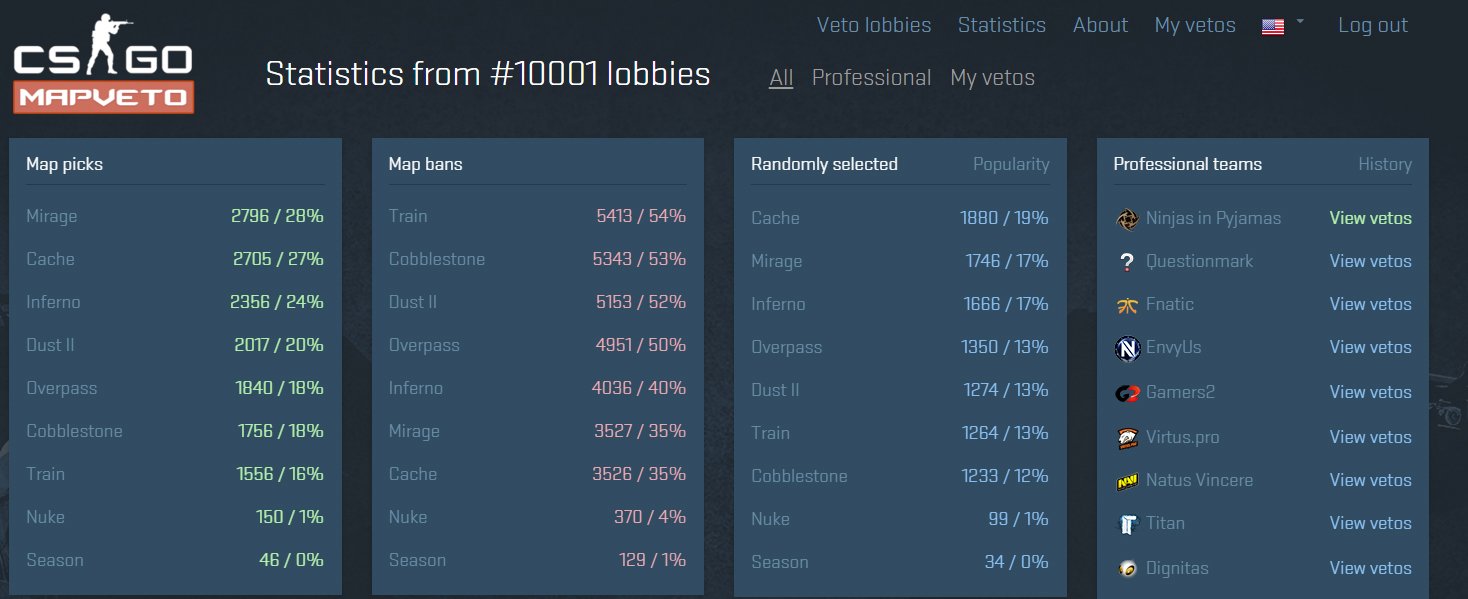BJY Trends
Stay updated with the latest trends and insights.
Veto Games: How the CSGO Map Ban Strategy Shapes Competitive Play
Discover how the CSGO map ban strategy transforms competitive play and gives teams the upper hand. Dive in for pro tips and insights!
Understanding the Impact of Map Bans on CSGO Competitive Strategies
In the competitive landscape of CSGO (Counter-Strike: Global Offensive), map bans play a crucial role in shaping team strategies and overall gameplay dynamics. When teams engage in a match, they typically enter a veto process to eliminate certain maps from the pool, which significantly influences not only the tactical approaches they adopt but also their choice of agents and playstyles. By understanding the impact of map bans, teams can tailor their strategies to exploit the unique characteristics and advantages of the remaining maps. Additionally, the psychological element of map choice adds another layer of complexity as teams attempt to predict their opponents' preferences and prepare accordingly.
Moreover, map bans can heavily affect a team's preparation and practice regimen. For instance, if a team eliminates a map where they struggle, it may bolster their confidence and enhance their chances of success on more favorable terrain. Conversely, teams that neglect to address their weaknesses on certain maps before competition may find themselves at a significant disadvantage. Thus, understanding the impact of map bans is vital for strategic planning, as it not only determines the battleground but also sets the tone for the entire match. In essence, mastering the veto strategy can be just as critical as player skills and teamwork in achieving victory in high-stakes CSGO matches.

Counter-Strike is a popular first-person shooter series known for its competitive gameplay and strategic team dynamics. Players engage in intense matches, often requiring well-coordinated teamwork and individual skill. Many gamers seek to optimize their performance by adjusting settings, like niko cs2 settings, which can make a significant difference in gameplay.
How to Effectively Use the Veto Process in CSGO Tournaments
In competitive CSGO tournaments, the veto process is a crucial strategic element that can determine the outcome of a match. Teams must effectively use the veto process to eliminate maps that do not align with their strengths or preferred playstyles. Typically, the veto process involves each team taking turns to remove maps from the pool until a set number of maps remains, usually three. Prior to the tournament, teams should analyze their own performance on different maps as well as their opponents' strengths to make informed decisions during the veto. By prioritizing maps where they excel and removing those where they struggle, teams can create a significant advantage.
Moreover, communication and teamwork during the veto process are vital to ensure that all players are on the same page. It is beneficial to hold discussions about the map pool and agree on a strategy beforehand. Consider using a map veto template to outline each team member's preferences and insights. An ordered list of factors to consider during the veto might include:
- Historical performance on each map
- Enemy team’s preferred maps
- Current meta trends
The Psychology Behind Map Bans: Strategies for Gaining the Upper Hand
The psychology behind map bans in competitive gaming is a fascinating interplay of strategy, player psychology, and advanced game theory. Understanding the strategies for gaining the upper hand begins with recognizing the importance of pre-game decision-making. Each team's choice of map bans can serve to exploit their opponents' weaknesses while reinforcing their own strengths. For instance, teams often analyze their adversaries' past performances on specific maps, which can heavily influence their banning strategy. By eliminating maps where the opposing team excels, they not only limit options but also create a mental barrier that may affect their opponents' confidence.
Moreover, the concept of psychological warfare extends into the map ban process, where teams can utilize deception to mislead their opponents. Creating a façade of strength on certain maps while latent in others can scramble the enemy's tactics and expectations. In a high-stakes environment, even subtle shifts in map selection strategy can tilt the balance of power in favor of one team. Therefore, it’s essential for teams to develop a strong understanding of both their own capabilities and those of their opponents, thus crafting a comprehensive approach to map bans that encompasses both psychological tactics and empirical data.